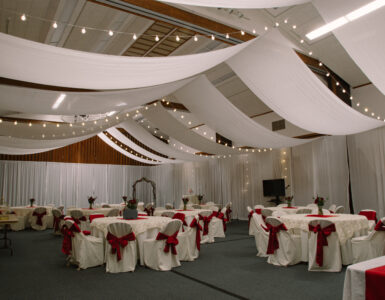Becky Low, with Dairy Farmers of Utah, shows how to “craft “authentic, artisan bread.
What makes Artisan Bread?
Artisan bread is “crafted” rather than mass produced or made from mixes. I guess with that definition any homemade bread might be considered Artisan bread. But to take it a step further, artisan breads have a fuller flavor, more airy texture due to a pre-ferment, often a crusty crust, and they are baked on stone. Let’s break it down and talk about the characteristics.
Pre-Ferment, Biga, Poolish
Pre-ferment is a starter. It is created by mixing flour, water and a small amount of yeast; cover and allow it to ferment for several hours/overnight. Probably the most common starter or pre-ferment is sour dough where natural yeasts create the leavening. Today I am using “biga” which is Italian, very similar is “poolish” which is French (and a little more moist or batter consistency than biga). Biga / poolish are a type of a sponge – but do not call them a sponge to artisan bread purists. Like sourdough biga creates a lacy open texture, but does not create the stronger sourdough flavor. When using biga, yeast is often added to the bread ingredients to work with the biga.
Once the biga has developed (can keep it in the refrigerator for up to 3 days – or freeze it), add it to the remaining bread ingredients (including small amount of yeast), knead until smooth, cover and allow to rise double in bulk (shape the kneaded bread on baking sheet).
Allow the bread dough to rise uncovered once it is shaped. When the dough has raised double in bulk and ready to bake, sprinkle with flour for characteristic old world look and make slashes across the top with a sharp knife (just before it goes into the oven).
Crusty Crust
Steam creates the crust. Before preheating oven place a large baking sheet or broiler pan on the bottom rack of the oven. Place the baking stone on the second rack. Pre-heat oven to 400 degrees.
Place the raised bread in the oven, then immediately pour 1-2 cups hot water into the pan on the bottom rack. Immediately close the oven to trap the steam. Bake bread for approximately 25 minutes or until browned.
Baking Stone
They are popular because they bring the old world brick oven to our kitchen. Professional ovens are brick lined to evenly distribute the heat and create a more uniform product. Baking stones replicate the brick oven at a much more affordable price for home use. Couple of cautions: Warm the stone before placing in the oven. Preheat the stone with the oven and allow the stone to continue to heat for about 20 minutes once the oven has reached temperature.
If you do not have a stone, use a flat baking sheet or turn a baking pan upside down and bake on the bottom. Since the stone is hot when the bread dough is placed on it to bake use a pizza or padle to slide the loaf onto the stone. I have found a flat cookie sheet lined with parchment paper works great. The parchment easily slides from the cookie sheet onto the stone for baking. Final on baking stones – follow the manufactures directions for seasoning it – like cast iron; slow heating and completely cooling the stone will prevent breakage; do not use soap on the stone.
Serve artisan bread with herb butter.
For delicious dairy recipes and nutrition information go to www.utahdairycouncil.com,
www.NationalDairyCouncil.org or Facebook www.facebook.com/DairyUTNV















Add comment